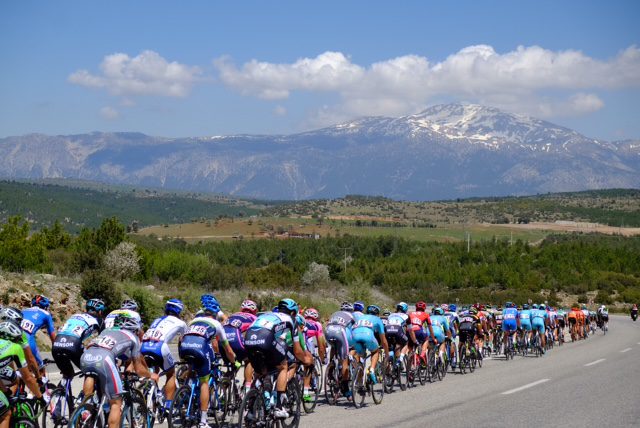The (Really) Long Ride-Bike touring preparations
Canadian highways and roads can be thin oceans used to sail toward adventure.

This article was originally published in 2012.
Long-distance, self-supported bike touring is one type of travel where the journey is the destination. In my 30s, I had a career that gave me summers off, and I used that as an excuse to take four different tours that each lasted a month or more.
Typically, they would started and finish in my hometown and took me throughout B.C. Each tour left its tire tracks in my mind and I was usually planning the next one before I got home from the one I was on. There’s something marvelously liberating about having everything you need for several weeks of survival balanced on your bike.
To start off, if you’re going to ride loaded, you need a sturdy bike and proper gear. Numerous bike companies offer touring-specific bicycles in either flat or drop handlebar options. But that old rigid mountain bike you have collecting dust in basement might be all you need.
My touring bike is a 1994 Rocky Mountain Hammer with durable wheels. It has eyelets for racks and fenders and blessedly-low gearing. Bungee cords will work wonders in a bind, but proper panniers are the best option. If there are enough people to share the common gear, it’s possible to tour with just a single pair of panniers on the back of the bike, but too much weight in the rear will make your bike wheelie on steep climbs.
Life on tour is simple: you eat, sleep and ride. This is reflected in what you carry on the trip. I averaged about four and a half hours of saddle time a day on my trips and in order to repeat that day after day, my body needed lots of rest and food.
You know how food always tastes better when while camping? Food takes on a whole new dimension of appreciation while touring. The food is incredibly satisfying and you can gorge since you’re easily burning a couple of thousand calories a day. Making sure you consume enough calories to replace what you’ve burned is important. My tours were largely fuelled by Pepsi, sandwiches and Tim Horton’s donuts. But my trusty camping stove provided me with instant oatmeal and coffee every morning.
Camping gear, especially for cooking and sleeping, continues to improve with lighter and smarter designs. Canada’s weather can vary wildly, so stick with three season tents and sleeping bags.
The same principal can be applied to clothing. For the first two weeks of my last trip around the Rockies it rained every day. I was so cold that I made up a song about how much I missed my neoprene gloves. Later in the tour, the sun came out and it was so hot that I regretted packing jerseys that were all darker colours. Pack with a range of conditions in mind.
Multi-week touring is a great way to see your province or to venture out elsewhere in the country or around the world. Because of its length, both in time and kilometres, touring is a memorably intense and thoroughly rewarding part of cycling culture that is within every cyclist’s ability.
Touring Tips
– Touring will get you in shape, but you should go into it with a training base. Participating in long charity rides is a fun way to prepare. Just don’t over train.
– Make a fully-loaded dry run. To get set for a 2,600 km trip, my nephews and I rode 70 km one day, camped and then returned the next day. It was invaluable research.
– Even with fenders, rain will soak the contents of panniers. Springing for water-proof bags will pay dividends.
– Too much weight on the front, either in a handlebar bag or a pair of small panniers, can make the handling twitchy.
– Until you learn to tell your panniers apart off the bike, mark them so you’re always putting them back in the same position.
– Spend the first couple of days fine-tuning your saddle and making any other adjustments to achieve maximum comfort and efficiency.
– Always carry food and water and replenish at every opportunity. Pop-Tarts are a great emergency food option.
– Your body will tell you when it needs a day off or two. Listen and obey.
– Nothing sours a trip like saddle sores. Change out of your shorts when you’re done pedalling for the day, especially when they’re wet.
– Accept that you will run into some mechanical issues along the way. Don’t sweat it. Knowing which towns have been shops is a good idea.
– Your bike maintenance kit should (at least) allow you to repair a flat tire, clean your drivetrain, lube your chain and tighten bolts.
– Not just fellow cyclists will want to talk to you when you stop. Even if you’re exhausted, try to be a good ambassador.
– Share the road. You’re wider now, so use the shoulder if you can. Riding two or more abreast makes drivers nervous and is illegal in some places.
